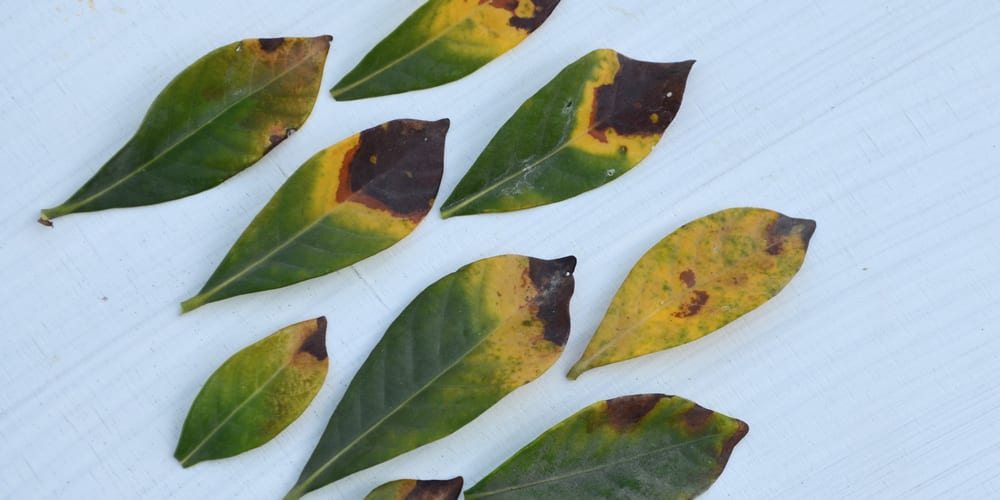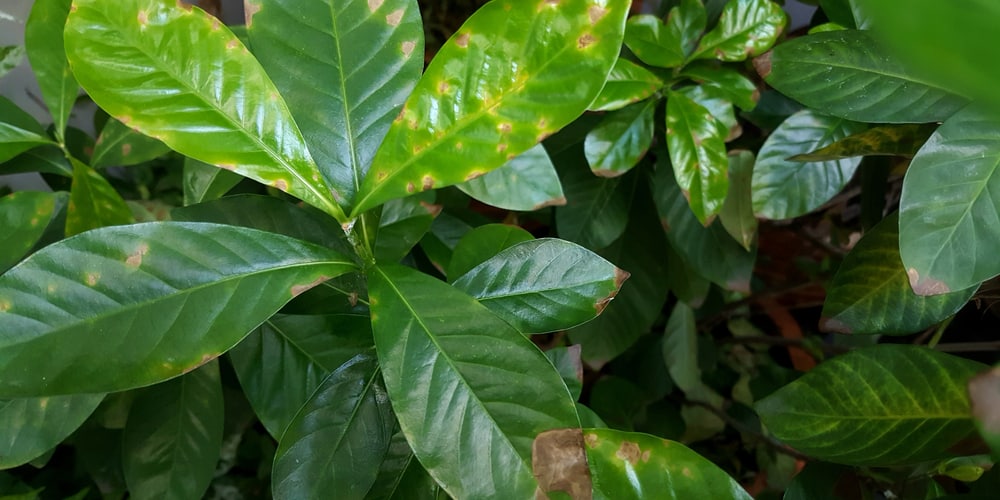Gardenias are gorgeous plants that many gardeners in the southern states choose to grow outdoors. People love them for their delicate-looking flowers, the lush foliage, and the attractive scent they release in the spring and the summer. However, they aren’t the easiest shrubs to grow. Sometimes, they can be fussy and require some attention from your side.
Still, even when you learn about all its needs and requirements, your gardenia’s foliage might lose the density and greenery that characterize it. But what do you do when gardenia’s leaves turn yellow?
To begin with, you must identify the root cause of the issue. Keep reading this essential guide if you want to learn all you need about this condition (and get tips to reverse it).
What Do Gardenia Leaves Turning Yellow Mean?

One of the main attractions of a gardenia shrub is its dark green foliage. And when the plant loses its natural color, it is usually one of the first symptoms something is wrong with it. Several factors can cause discoloration.
Among them are inadequate watering, unsuitable soil, and too much or too little nutrients. Also, attacks from pests and diseases might cause your gardenia to display yellow leaves.
Luckily, if you take prompt action when you notice something isn’t right with your plant, you’ll be able to reverse it to its natural colors.
Inadequate Watering
Gardenias can be fussy plants. They require constant moisture, but too little or too much water can cause severe issues. For this reason, you must plant your gardenia in well-draining soil (more on this later) and follow a regular watering schedule.
These plants like moist environments, but too much water can cause root rot. Additionally, it may attract fungal infections and result in the yellowing of the leaves. Of course, too little moisture will also create problems.
To avoid issues, water your plant when the soil feels dry and consider adding some compost (or a layer of mulch). Doing so will improve drainage, increase water retention, and provide your gardenia with extra nutrition. Usually, an inch of water per week will be more than enough.
Unsuitable Soil Conditions
To grow thriving gardenias, plant them in a suitable potting mix. The substrate must be well-draining to avoid issues with watering and prevent the appearance of fungi and other diseases. Also, remember that gardenias prefer acidic growing conditions. Inadequate environments can cause them to display yellow leaves. Consider doing a pH test and make the necessary amendments to bring the acidity between 5.0 and 6.5.
Also, pay attention to any nutrient deficiency that your plants might suffer. An inadequate pH level can prevent your gardenia from absorbing essential nutrients such as iron, nitrogen, magnesium, and zinc. And if your plant lacks any of these elements, it may display yellow leaves. For instance, a lack of magnesium will result in yellow leaves with green tips.
Inappropriate Climate
Gardenias will only thrive in an adequate climate and humidity. Ideally, you should avoid exposing them to temperatures below 55°F. Cold temperatures may cause many issues to your plant, including discoloration. If you live in a dry region, consider misting your plant’s leaves to maintain the proper humidity.
For best results, pick a location that receives full sun for your plant. Too little light can also result in the yellowing of its leaves. However, if you live in a warm area where summers are hot, consider protecting your plant from the scorching rays of the afternoon sun.
Still, adding a layer of organic mulch will help stabilize the temperature around your plant and prevent thermal shocks. If you decide to grow your gardenias indoors, remember that they should receive at least six hours of direct sunlight daily. So, place them next to a luminous window.
Overfertilization
While gardenias (as all plant species) need nutrients to thrive, too many can cause issues. Pick a balanced fertilizer and apply it during the growing season (from March to October). Remember to follow the instructions you find on the product’s label and suspend the application in the winter. Fertilizing your gardenia every two or four weeks will be more than enough.
Keep an eye on your plant to ensure it is responding how it should to the treatment. If it doesn’t, consider replacing the fertilizer with another one.
